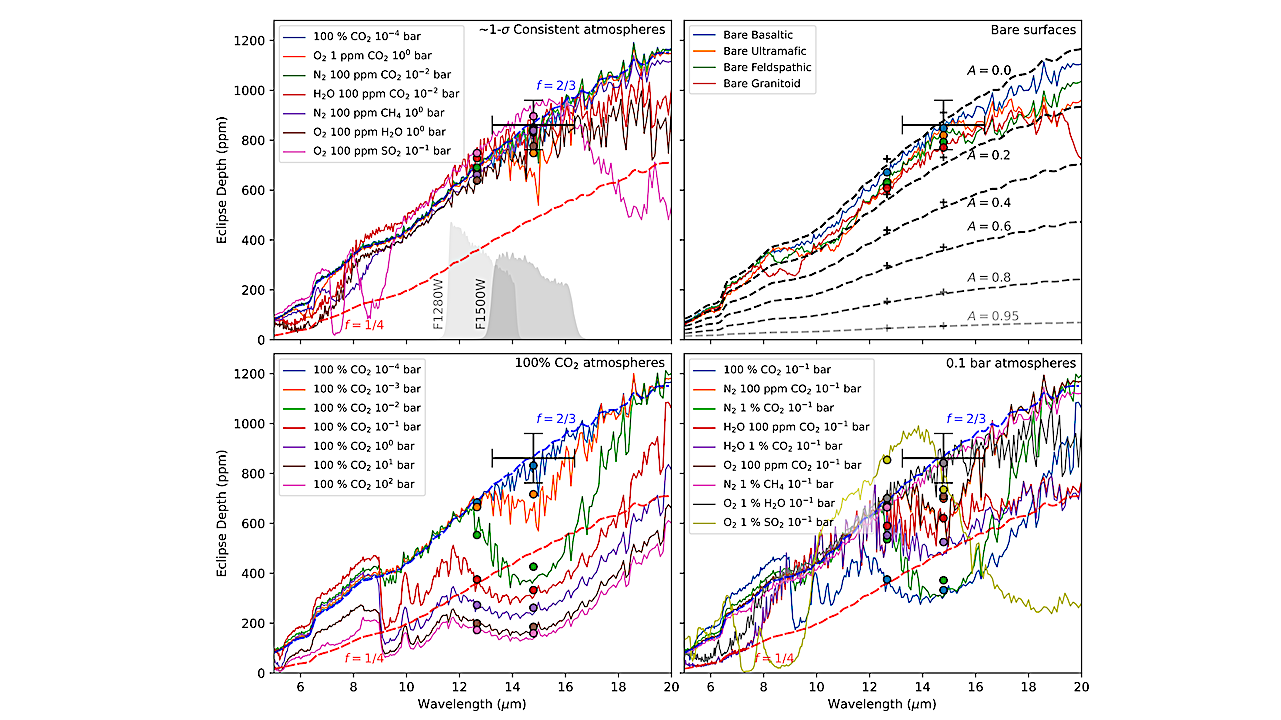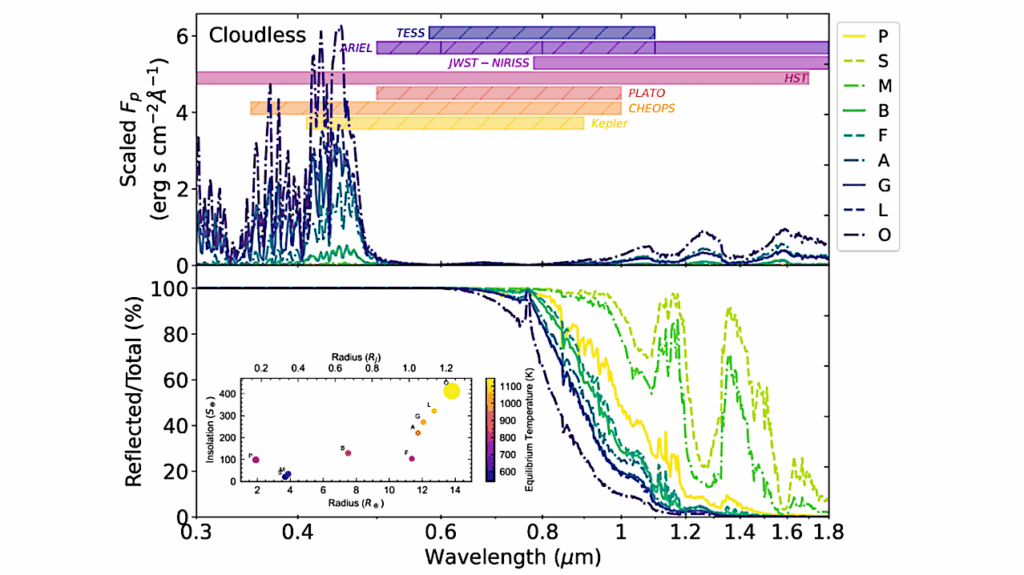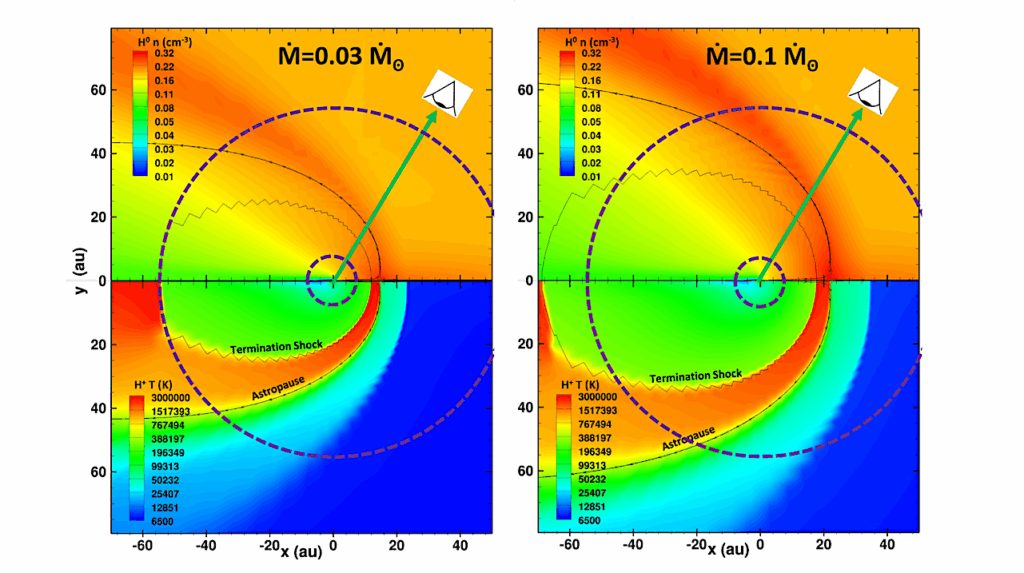Constraining the Thickness of the Atmosphere of TRAPPIST-1 b from its JWST Secondary Eclipse Observation

Recently, the first JWST measurement of thermal emission from a rocky exoplanet was reported. The inferred dayside brightness temperature of TRAPPIST-1 b at 15 μm is consistent with the planet having no atmosphere and therefore no mechanism by which to circulate heat to its nightside.
In this Letter, we compare the measured secondary eclipse depth of TRAPPIST-1 b to predictions from a suite of self-consistent radiative-convective equilibrium models in order to quantify the maximum atmospheric thickness consistent with the observation.
We find that plausible atmospheres (i.e., those that contain at least 100 ppm CO2) with surface pressures greater than 0.01 bar (0.1 bar) are ruled out at 1σ (3σ), regardless of the choice of background atmosphere. Thicker atmospheres of up to 10 bar (100 bar) at 1σ (3σ) are only allowed if the atmosphere lacks any strong absorbers across the mid-IR wavelength range, a scenario that we deem unlikely.
We additionally model the emission spectra for bare-rock planets of various compositions. We find that a variety of silicate surfaces match the measured eclipse depth to within 1σ, and the best-fit grey albedo is 0.02±0.11. We conclude that planned secondary eclipse observations at 12.8 μm will serve to validate the high observed brightness temperature of TRAPPIST-1 b, but are unlikely to further distinguish among the consistent atmospheric and bare-rock scenarios.
Jegug Ih, Eliza M.-R. Kempton, Emily A. Whittaker, Madeline Lessard
Comments: 8 pages, 4 figures, submitted to ApJL
Subjects: Earth and Planetary Astrophysics (astro-ph.EP)
Cite as: arXiv:2305.10414 [astro-ph.EP] (or arXiv:2305.10414v1 [astro-ph.EP] for this version)
Submission history
From: Jegug Ih
[v1] Wed, 17 May 2023 17:50:04 UTC (399 KB)
https://arxiv.org/abs/2305.10414
Astrobiology,








